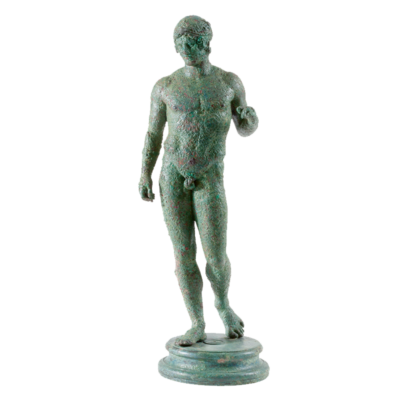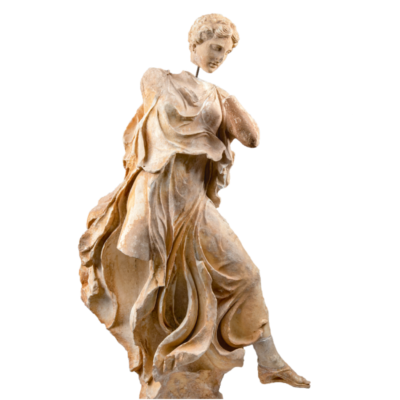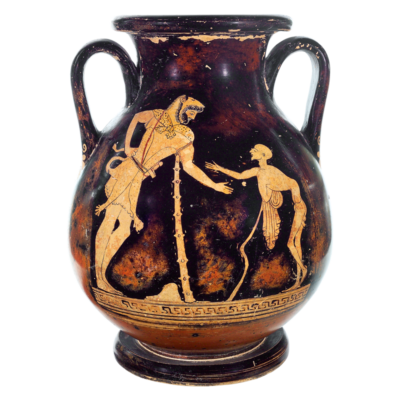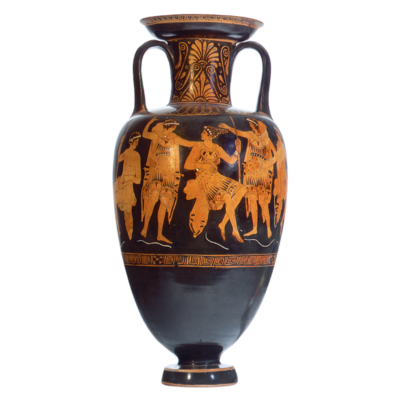The Youth
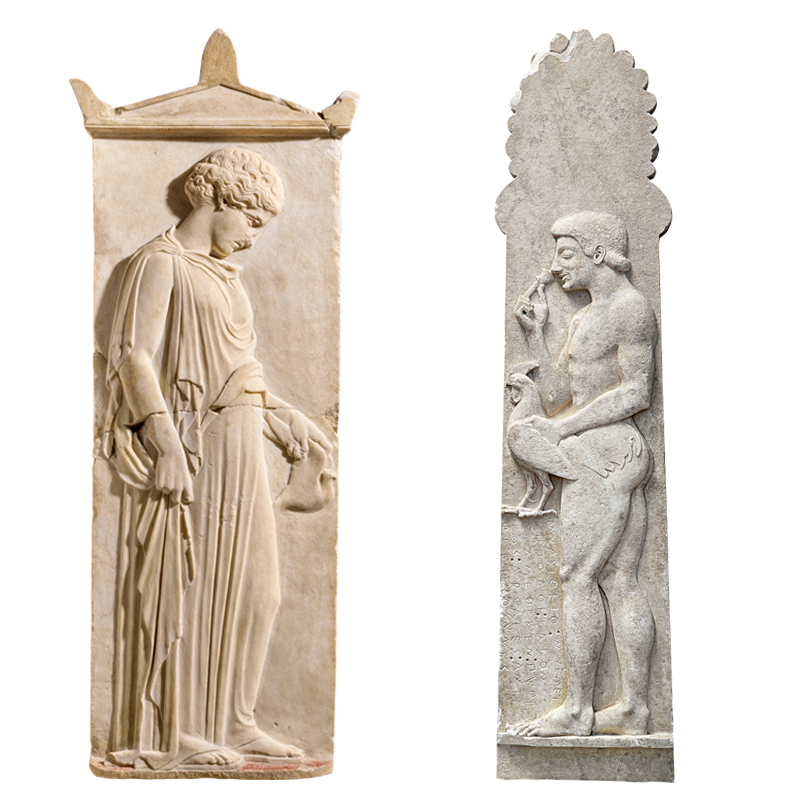
Left:
From Nea Kallikrateia, Chalcidice. 440 BC. Archaeological Museum of Thessaloniki ΜΘ 6876.
© Hellenic Ministry of Culture and Sports/Archaeological Museum of Thessaloniki/H.O.C.RE. D. Photograph: Orestis Kourakis.
Right:
From the Archaic cemetery of Akraiphnion. 510 BC. Archaeological Museum of Thebes ΜΘ 28200.
© Hellenic Ministry of Culture and Sports/Ephorate of Antiquities of Boeotia/H.O.C.RE. D. Photograph: Sokratis Mavrommatis.
Left: Marble grave stele with relief representation of a girl from the Classical Period.
Right: Marble grave stele of a youth from the Archaic Period.
These two marble steles present the full-body figures of two young people. On the left, the figure of a girl is depicted, holding a dove from its wings and, on the right, a young boy holding a rooster with one hand and smelling a flower in his other hand. All are symbols of youth and fertility.
Despite their many similarities, we can easily discern strong differences in the representation of the bodies, which reflect the rules of ancient society.
Thus, the young boy is depicted naked, with his athletic body standing straight and his head erect, with the famous grin not entirely disappeared from his lips, while the girl appears clothed, in a posture suggesting shyness and modesty, with her head bowed and a sorrowful expression. This way, we get an idea of the patterns of behavior, and the roles they were intended to have in society.
SEARCH & LEARN
• In archaic times, the most emblematic full-body sculptures were the Kouroi and the Korai. The representation of the young boy’s body strongly resembles the figure of a Kouros. Look at images of Kouroi and search for similarities with the grave relief.
→ Can you also mention the differences?
THINK
• What could the flower that the young boy is holding in his hand symbolize?
• What could the birds that the two young people are holding in their hands symbolize?
DID YOU KNOW THAT...
• The upright posture distinguishes humans from all other living beings?
• The Greek words ώρα (hour), ώριμο (mature), and ωραίο (beautiful) all have the same root. What could this signify?
TOPICS FOR DISCUSSION
• Are there currently differences in the representation and appearance of the two genders in the public sphere? If so, what are they?
• There are contemporary depictions of tomb monuments in everyday life. For example, roadside shrines and murals of people (like the mural of Diego Maradona in Naples).
→ Can you think of other modern monuments and discuss them?

